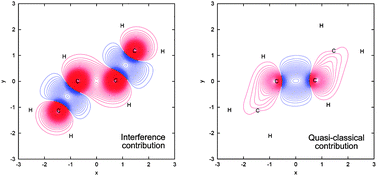The role of quantum-mechanical interference and quasi-classical effects in conjugated hydrocarbons
Abstract
The nature of the chemical bond in conjugated

* Corresponding authors
a
Instituto de Química, Universidade Federal do Rio de Janeiro, Cidade Universitária, CT, Bloco A, sala 412. Rio de Janeiro, RJ, Brazil
E-mail:
chaer01@gmail.com, chaer@iq.ufrj.br
Fax: +55-21-2562.7265
Tel: +55-21-2562.7563
The nature of the chemical bond in conjugated

 Please wait while we load your content...
Something went wrong. Try again?
Please wait while we load your content...
Something went wrong. Try again?
F. Fantuzzi, T. Messias Cardozo and M. Antonio Chaer Nascimento, Phys. Chem. Chem. Phys., 2012, 14, 5479 DOI: 10.1039/C2CP24125K
To request permission to reproduce material from this article, please go to the Copyright Clearance Center request page.
If you are an author contributing to an RSC publication, you do not need to request permission provided correct acknowledgement is given.
If you are the author of this article, you do not need to request permission to reproduce figures and diagrams provided correct acknowledgement is given. If you want to reproduce the whole article in a third-party publication (excluding your thesis/dissertation for which permission is not required) please go to the Copyright Clearance Center request page.
Read more about how to correctly acknowledge RSC content.
 Fetching data from CrossRef.
Fetching data from CrossRef.
This may take some time to load.
Loading related content
